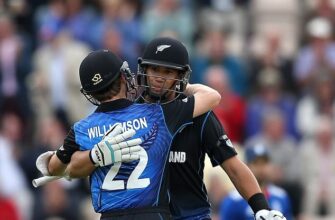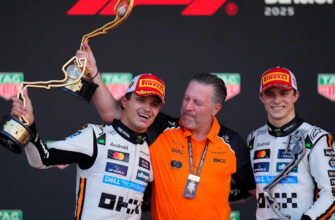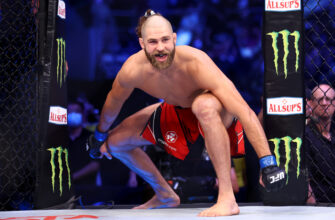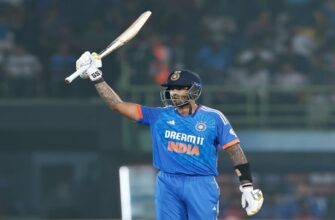In the intricate tapestry of modern football tactics, shifts in philosophy often hinge on a single, pivotal player. For Mikel Arteta’s Arsenal, that pivot point appears to be none other than their captain, Martin Odegaard. His recent return to the starting lineup has not merely coincided with renewed attacking verve; it has, in fact, become the catalyst for a profound tactical reorientation, pushing the Gunners towards a more aggressive, direct, and frankly, exhilarating style of play.
The Strategic Gambit: From Chokehold to Full Throttle
For seasons, Arsenal`s attacking identity under Arteta was characterized by a meticulous, almost surgical precision. The ball moved deliberately, patiently probing, drawing opponents out, before Odegaard and Bukayo Saka would engage in their familiar two-man game to carve open defenses. It was effective, certainly, but at times, it felt like applying a slow, deliberate chokehold – a process that, while often successful, lacked the instantaneous explosiveness that can truly dismantle a low block.
Now, a new directive seems to be emanating from the dugout: speed. Arsenal is consciously striving to bypass the midfield press and deliver the ball into dangerous areas with startling rapidity, catching opponents off balance before their defensive lines can properly settle. This isn`t merely a tweak; it`s a strategic gambit, a conscious decision to trade some possession-heavy comfort for the intoxicating thrill of direct, incisive attacks.
Odegaard: The Maestro`s Audacious New Mandate
At the heart of this tactical renaissance is Martin Odegaard. Far from being a mere participant, he is the designated orchestrator of this accelerated tempo. What stands out isn`t just his customary vision, but a newfound audacity in his passing. The captain is now demonstrably more prepared to gamble with possession, embracing a higher risk-reward profile that sometimes sees his passing accuracy dip from his usual lofty 87% into the high 70s. For some, this might raise an eyebrow; for Arteta, it’s precisely the freedom he craves.
Picture it: the ball is won, and instead of a conservative pass, Odegaard drops a shoulder, demands the ball, and with a single touch, unleashes a venomous through-ball, splitting defenders and inviting forwards like Viktor Gyokeres or Gabriel Martinelli to wreak havoc. It`s a calculated decision – a willingness to sacrifice a statistically perfect pass completion rate for the prospect of a game-changing moment. This is the “killer pass,” delivered not as a patient culmination of a build-up, but as an immediate, piercing thrust.
“He has total freedom from my side to do and to explore and to take risks and to feel the movement away. He needs to generate those spaces and I think he`s certainly done that in the last two games,” Arteta remarked, underscoring the deliberate nature of this aggressive shift.
Unleashing the Front Line: Pace and Precision Unbound
This aggressive approach directly caters to the strengths of Arsenal`s pacey attackers. For forwards who thrive on quick, direct service – the kind of ball that allows them to run at unsettled backlines – Odegaard’s newfound directness is a godsend. Gyokeres, for instance, a player known for his wrecking-ball dynamism, flourishes when he receives quick service, allowing his powerful runs to exploit gaps before they solidify. Martinelli, too, with his blistering pace and direct dribbling, benefits immensely from being unleashed against defenses that haven`t had time to organize. The result? More shots, higher expected goals, and a palpable sense of danger with every rapid transition.
The Calculated Risk: Embracing the “Basketball-y” Flow
Naturally, such an attacking philosophy comes with its own set of challenges. A faster, more “basketball-y” approach, as some might humorously term it, inevitably leaves defenses occasionally vulnerable during transitions. When the ball is lost in advanced, risky areas, the counter-press must be impeccable, or opponents can exploit the spaces left behind. Yet, with a defensive unit of Arsenal’s quality, and attackers who are not only threatening but also diligent in their pressing, it’s a risk Arteta appears more than willing to explore. The trade-off, it seems, is worth the enhanced dynamism and unpredictability that Arsenal`s attack now possesses.
This isn`t merely about throwing caution to the wind; it`s a finely tuned balance of aggression and technical prowess, where the captain`s genius is redirected towards a more direct, impactful form of playmaking. Odegaard isn`t just a passer; he`s a weapon, and Arteta is now giving him the ammunition to fire with maximum velocity.
Conclusion: A New Era of Arsenal Attacking Prowess
As Arsenal continues to evolve, Martin Odegaard`s role as the pivot in their attacking machinery becomes increasingly evident. His willingness to embrace risk, to ping passes with newfound aggression, is not just a personal evolution; it`s a reflection of a deeper tactical shift under Mikel Arteta. The meticulous, patient build-up has given way to a more dynamic, swift, and potent offensive strategy, designed to overwhelm and disorient opponents. With Odegaard confidently conducting this high-octane symphony, Arsenal’s attack promises to be not just effective, but truly captivating.






